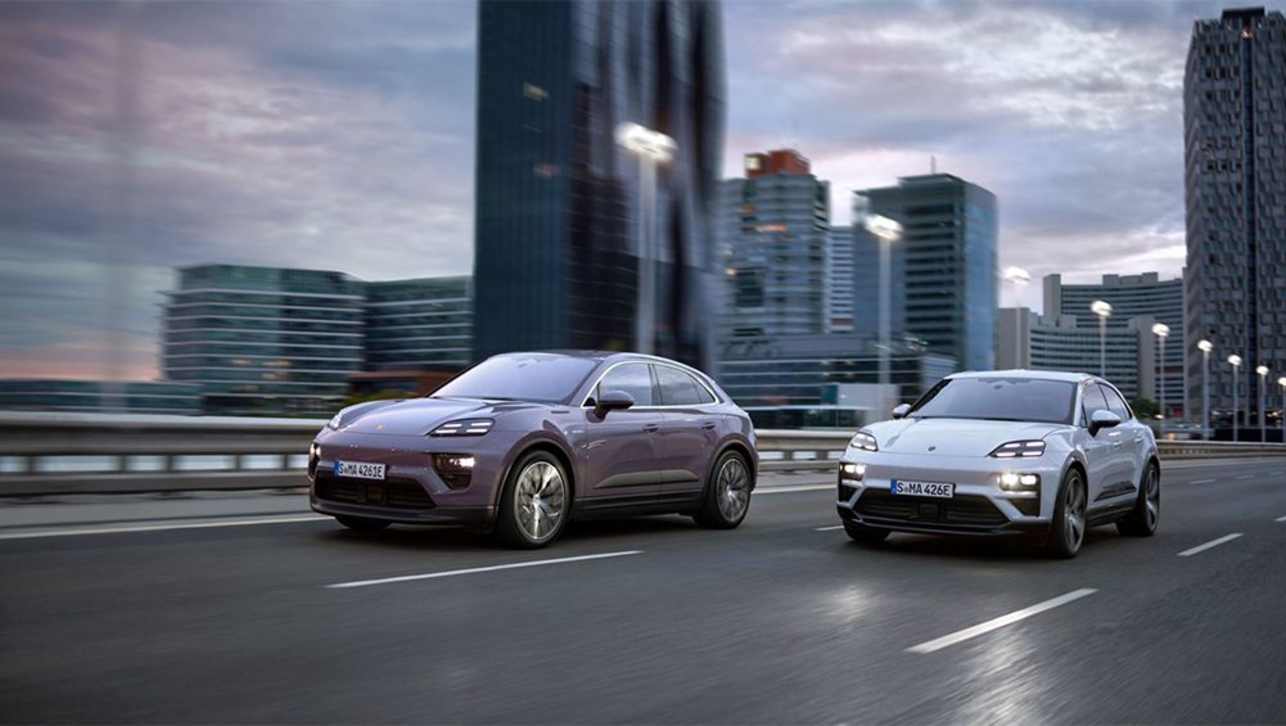Concept cars serve many purposes, from showcasing a new design language to previewing technology or just thinly disguising the next production model.
But for every meaningful concept that gives us a glimpse of what is to come, there’s often just as many that preview… well... nothing. These are the concepts we thought it would be fun to explore; the ones that never stood a chance of making it to a showroom.
Porsche Vision ‘Renndienst Study’
.jpg)
The German giant released a flood of previously secret concept projects in 2020 in the book Porsche Unseen. Amongst them was a Vision ‘Renndienst’ (Race Service), a small van inspired by the company’s Volkswagen Kombi support vehicle from the 1960s.
Just recently, it showed off the Vision ‘Renndienst Study’, a people-mover version that was used to experiment with some interior design elements.
The thought of the brand launching a rival to the likes of the Mercedes-Benz Viano or Kia Carnival is as confronting as it is implausible.
After all, some purists are still upset that the brand sells the popular Cayenne and Macan SUVs, so a people mover, even one as sleek as the Renndienst ,would be a bridge too far.
Land Rover DC100
.jpg)
Sometimes when the covers come off a concept, it immediately hits the mark and the masses start asking when it will go into production. Then there’s what happened to the DC100.
Land Rover faced the unenviable task of replacing the iconic Defender last decade, but as history will judge, the DC100 concept that was meant to preview the all-new model was so poorly received it pushed the entire program back five years.
Unveiled at the 2011 Frankfurt motor show, the DC100 was meant to preview the production version that would arrive in 2015. In reality, it was so poorly received that the Land Rover designers headed back to the drawing board and the all-new Defender didn’t arrive until 2020.
Lexus LF-30 Electrified
.jpg)
This creation revealed at the 2019 Tokyo motor show showcases an entire sub-genre of concept cars - futuristic design studies.
Car companies have developed a habit over the years of giving their designers free reign to imagine cars a decade or more into the future, which history has shown is rarely accurate.
The LF-30 Electrified perfectly encapsulates this type of concept, underneath the surface is a preview of the brand’s planned electric powertrain, but the body and interior are purely the dreams and visions of the designer.
In other words, you’ll soon be able to buy a Lexus UX with an electric motor, but there’ll never be anything that looks like the LF-30 Electrified in a showroom.
Mercedes-Benz Vision Tokyo
.jpg)
Back in 2015, Mercedes believed that Generation Z (those born after 1995) wanted a different type of luxury experience… an oddly shaped wagon with glowing blue wheels and loaded with technology.
The Vision Tokyo (so named because it was revealed at the Tokyo motor show that year) featured elements like “innovative algorithms”, “deep machine learning” and “an intelligent predictive engine” that would allow the car to get to know the occupants and adapt to their needs.
Obviously, there have been some elements of this technology beginning to trickle down into Mercedes we buy today, such as the ‘Hey Mercedes’ voice command system. But the radically designed Vision Tokyo was packaged in such a way that’s likely so different to what we’ll ever see in a three-pointed star showroom.
The German giant used phrases like “monolithic structure” and “glazed cockpit of a powerboat” to describe a car that wasn’t a sedan, wasn’t a wagon and wasn’t a van. In other words, a vision of a future we’ll never see.
Audi AI:Trail quattro
.jpg)
Audi is a brand renowned for its off-road vehicles, with its rich heritage of rock crawlers, mud rigs and beach buggies… no, wait, that doesn’t sound right.
No, Audi is a brand famous for prestige and performance cars, often with all-wheel drive but nothing in the way of hardcore off-roaders. Which is why the 2019 AI:Trail Quattro is on our list of unlikely concepts.
Not only is this jacked-up, pumped-out off-road buggy deeply out of character for the brand, it’s also autonomous. The idea of a car that drives itself seems at odds with the spirit of off-road enthusiasts. It was part of a multi-concept car strategy for the brand to begin showing off its autonomous and electrified future models.
Needless to say, the chances of seeing anything remotely similar to this is rated somewhere between slim and none.
Infiniti Prototype 9
.jpg)
Establishing a new brand is hard, but trying to start a new luxury brand is doubly difficult. That’s because brands like BMW and Mercedes-Benz are able to trade on their history and heritage to attract buyers; the idea of buying into an image or a lifestyle not just a car.
So, Infiniti tried to create its own history in 2017, revealing the Prototype 9 concept which was based on a theoretical vision cooked up by Infiniti’s head of design, Alfonso Albaisa, and the marketing department.
As Mr Albaisa explained at time: “It started as a simple thought: What if we found a car, down at the southern tip of Japan, buried deep in the barn, hidden from all eyes for 70 years?
“What if in this car we found the seed of passion planted during our first Japanese Grand Prix and the power and artistry of Infiniti today? What would this discovery look like?”
Except not only did Infiniti not exist 70 years ago, but the concept was powered by the same electric drivetrain as a Nissan Leaf, so hardly the type of motivation you’d find in a 1930s grand prix racer.
While stunning to look at, the Prototype 9 really didn’t seem to serve any purpose, it didn’t preview a production model or new technology and likely didn’t help sell any Infinitis at showrooms by creating ‘fake heritage’.



.jpg)



.jpg)



.jpg)
.jpg)
.jpg)







.jpg)
.jpg)




.jpg)

Comments